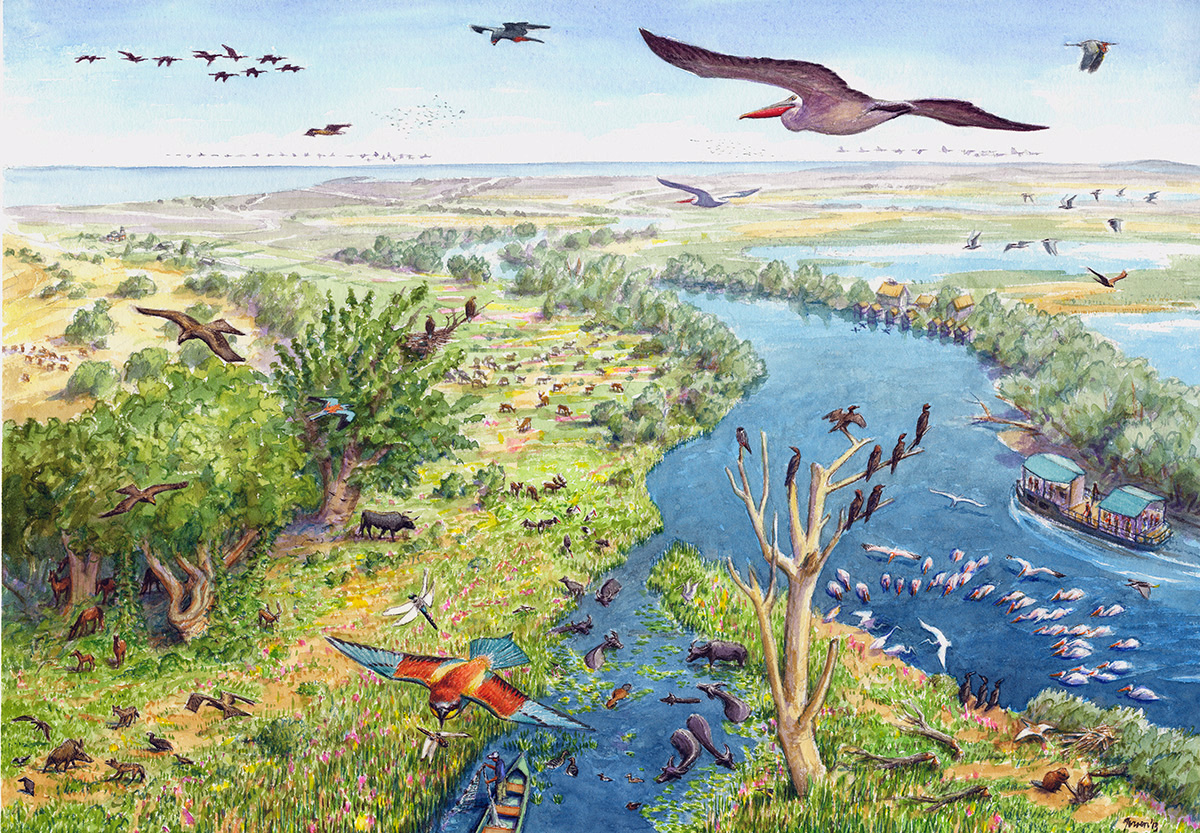Where the mighty Danube river meets the Black Sea, it has created a massive deltaland, Europe’s largest wetland area. It is still surprisingly wild and relatively undestroyed.
The 580,000 hectare delta is home to massive amounts of waterbirds of all kinds, most notably pelicans of two species, herons, storks, cormorants and terns. It is a favourite staging area for passage migrants and also wintering grounds for masses of migrating waterbirds from the steppes, the boreal forests and the tundras further north.
Here also lie some of Europe’s very few remaining grazed mosaic forest landscapes, the beautiful gallery woodlands from Letea and Caraorman. Beavers, are making their return into the area, the area holds healthy populations of golden jackal while white-tailed eagles show a remarkable comeback.
The massive productivity of the many water habitats here has led to the delta harbouring the largest number of fish species anywhere in Europe. Flagship species of which are the four species of sturgeon, which once used to wander the entire length of the Danube river all the way up into Germany. The area has unprecedented potential for wetland restoration and rewilding, in particular the former polders and lakes can be reflooded and reconnected with the Danube river dynamics.
